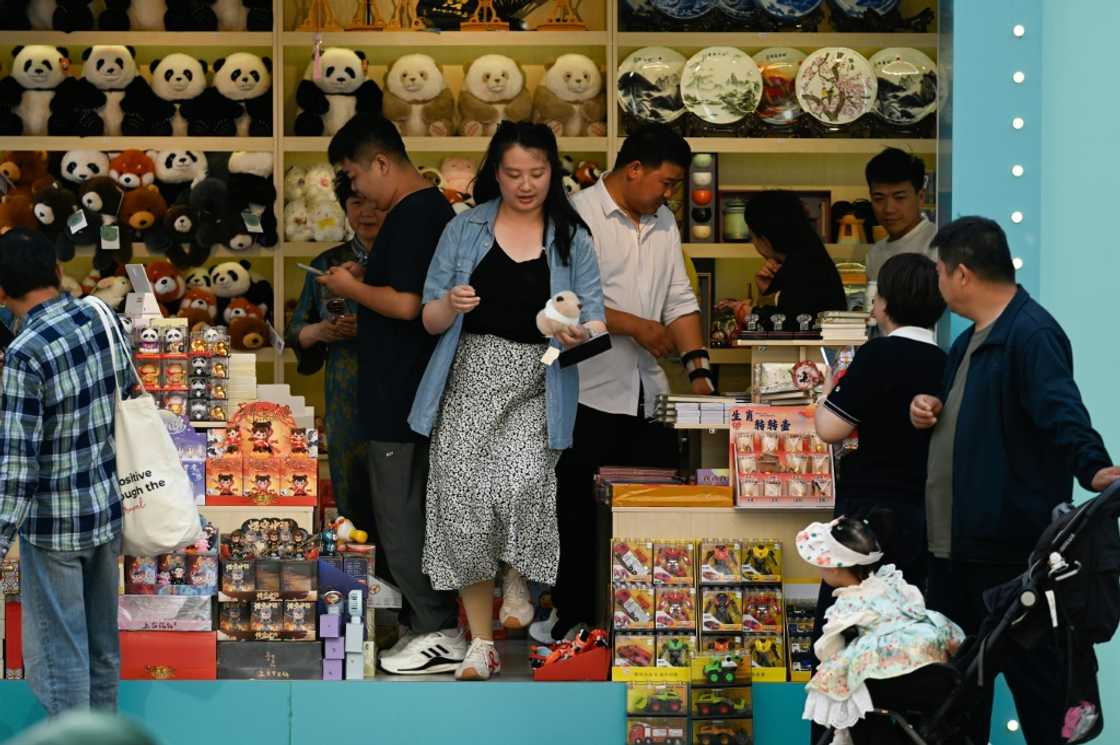
China said Saturday that consumer prices slumped in April for the third straight month, reflecting persistent challenges as leaders attempt to revive an economy stymied by sluggish spending and a fierce trade war with Washington.
The world’s second-largest economy has grappled with persistent deflationary pressure in recent years, as longstanding woes in the property sector and export headwinds impede growth.
The latest figures come ahead of Saturday’s start to a meeting of key economic officials from China and the United States in Switzerland, offering a potential off-ramp for the high-stakes trade war launched by President Donald Trump.
US tariffs on imports from manufacturing powerhouse China now stand at a staggering 145 percent for many products — and reach as high as 245 percent cumulatively on others.
Trump suggested Friday that the tariffs could be cut to 80 percent, though Beijing has demanded a complete cancellation of the levies that are compounding other challenges facing the Chinese economy.
The consumer price index (CPI) — a key measure of inflation — was down 0.1 percent last month year-on-year, according to data released Saturday by the National Bureau of Statistics (NBS), following previous drops in February and March.
The reading was in line with a Bloomberg forecast of a 0.1 percent year-on-year decline based on a survey of economists, and consistent with the slight drop recorded in March.
NBS statistician Dong Lijuan said Saturday in a statement about the data that “international imported factors have a certain downward impact on prices in some industries”.
“Persistent deflationary pressures continue to be an issue for China,” noted Zhiwei Zhang, President and Chief Economist at Pinpoint Asset Management, in a statement.
Zhang stated that the impact of these contributing elements “could increase over the next few months due to anticipated weaker exports.” He also emphasized that “a more active fiscal strategy will be essential to stimulate internal consumption.”
‘Downward pressure’
The National Bureau of Statistics (NBS) likewise declared on Saturday that the Producer Price Index (PPI) for April, which serves as another gauge of inflation, decreased by 2.7% compared to the previous year. This decline was more pronounced than the 2.5% decrease observed in March.
China’s Producer Price Index (PPI) has been stuck in deflationary territory for over two years, and the decline reported on Saturday matched market forecasts.
Dong attributed the changes in the global trade landscape and the sharp drop in certain international bulk commodity prices as factors contributing to the decrease in prices within associated domestic sectors reflected in the PPI figures.
The decline is partly because of the recent drop in oil prices, according to a note from Capital Economics analysts Zichun Huang and Julian Evans-Pritchard released on Friday.
But, they added, “we suspect that overcapacity in Chinese industry continued to put downward pressure on factory-gate prices too”.
Official data released on Friday indicated that China’s exports increased last month even amid the trade conflict. Experts attribute this surprising trend to a diversion of trade towards Southeast Asian countries as a strategy to avoid US tariffs.
Data from China’s customs authority revealed that although exports to the U.S. declined significantly in April, shipments to Thailand, Indonesia, and Vietnam saw robust growth of over 10% each.
This week, Chinese policymakers relaxed major monetary policy instruments in an effort to boost domestic activities.
These measures involved reducing a major interest rate and adjusting the reserves that banks are required to hold, aiming to encourage more lending. This initiative complements China’s extensive efforts since September to revitalize the economy.

Leave a Reply